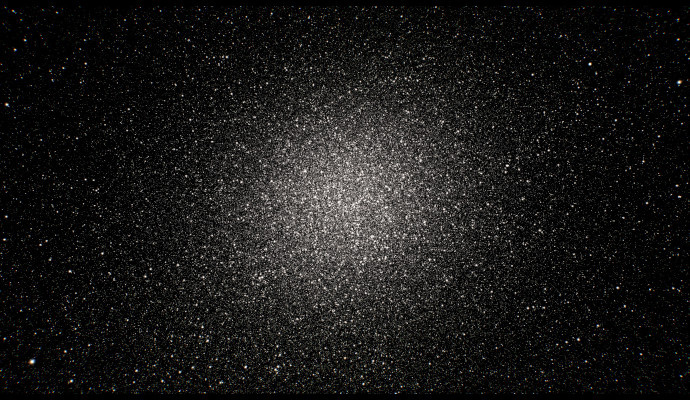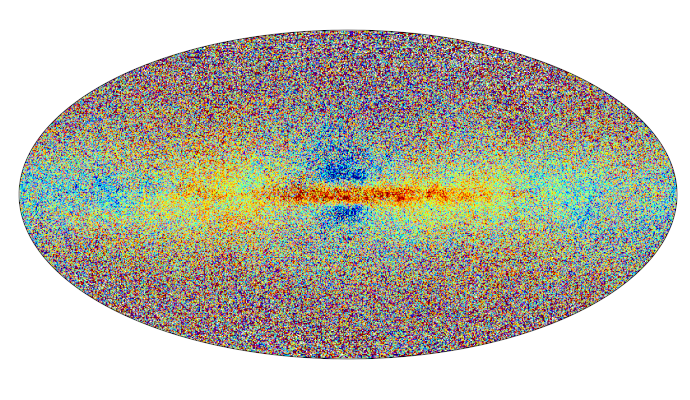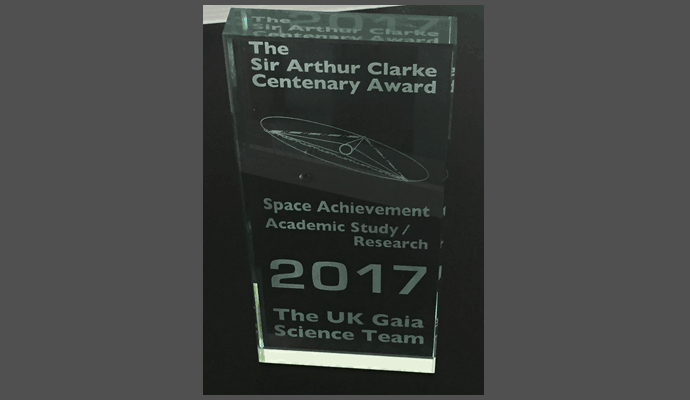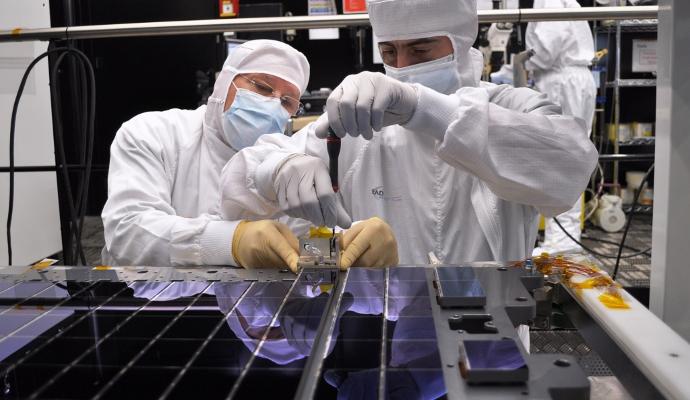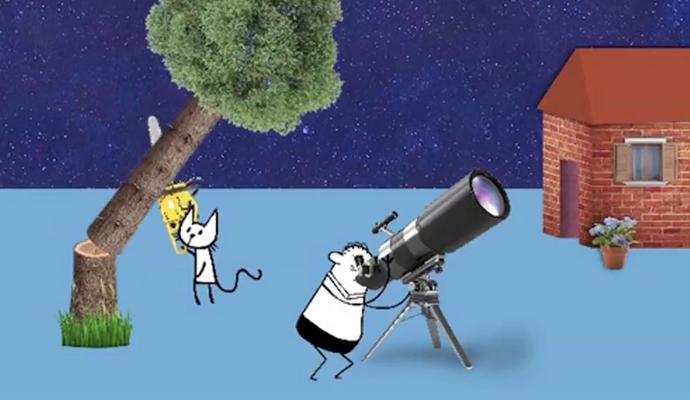Gaia's 10 years in space: Gaia was launched on 19 December 2013. Visit https://www.cosmos.esa.int/web/gaia/iow_20231219 for more information about the anniversary.
Gaia Focused Product Release
Gaia's Focused Product Release (Gaia FPR) was released on Tuesday 10 October 2023. Read more about Gaia FPR. The data is available from the Gaia Archive and from Gaia's partner data centres. The Gaia Focused Product Release builds partly on the data period that went into Gaia's Data Release 3 but in case of the Solar System objects it extends the period of time that forms the basis for the FPR data product. This is fully explained for each data product on Gaia Focused Product Release page. The five data products together form the Gaia Focused Product Release.
Gaia FPR products
Astrometry and photometry from engineering images taken in omega Centauri region
Sources based on Service Interface Function (SIF) images of very dense regions in the sky. These sources build an add-on catalogue to the nominal Gaia catalogue. Nominal and SIF detections were not mixed to create these sources. These sources are thus obtained from SIF image detections only. Sources already present in the nominal catalogue were removed from the SIF add-on catalogue.
The publication consists mainly of
- Astrometric information (position, parallax and proper motion) for 526,457 new Gaia sources as derived from the SIF images (with 130 additional sources with positions only).
- Photometric information (mean G magnitude and flux) for these same 526,587 sources as derived from the SIF images.
Full description of this data product will be provided in the Gaia Collaboration paper by Gaia Collaboration, K. Weingrill, et al.
First results of quasars' environment analysis for gravitational lenses search
A list of sources around quasar candidates with minimum angular separation of 0.3 arcseconds to be used for gravitational lenses search.
The publication consists mainly of:
- A table of 4.8 million sources (named components), based on an analysis of the observations in the neighbourhood of a list of 3.8 million quasar candidates. This table provides the mean astrometry and mean onboard photometry of the sources.
- The analysis of this table by several artificial intelligence algorithms led to the selection of a list of 381 gravitational lens candidates that are presented in the associated Gaia Collaboration paper. The 4.8 million sources with their scores to be a lens are available at CDS.
- A table of individual epoch observations linked to their corresponding source (component), with their celestial coordinates and onboard magnitudes.
- A table of individual epoch observations classified as outliers and rejected by our clustering analysis, with their celestial coordinates and onboard magnitudes.
Full description of this data product will be provided in the Gaia Collaboration paper: "Gaia Focused Product Release: A catalogue of sources around quasars to search for strongly lensed quasars" by Gaia Collaboration, A. Krone-Martins, et al.
Extended radial velocity epoch data for long-period variables
For a list of Long Period Variables, the radial velocity time series will be published.
The publication consists mainly of:
- Table with the epoch radial velocity data points for a sub-set of variable stars.
- Statistical parameters of radial velocity time series for these long-period variables.
Full description of this data product will be provided in the Gaia Collaboration paper by Gaia Collaboration, M. Trabucchi, et al.
Interstellar Medium: Diffuse Interstellar Bands
A main table of Diffuse Interstellar Band (DIB) parameters from DIB-Spec pipeline will be published, as derived from spectra binned in galactic latitude, longitude and distance.
The publication consists mainly of:
- A table of fitted Diffuse Interstellar Band parameters together with the uncertainties of the DIB at 862.1 nm and 864.8 nm for each voxel (volume pixel) which is defined according to the equatorial coordinates and the distance.
- A spectra table containing the stacked Interstellar Medium spectra for each voxel which is defined according to the galactic coordinates and the distance.
Full description of this data product will be provided in the Gaia Collaboration paper by Gaia Collaboration, M. Schultheis, et al.
Updated astrometry for Solar System objects
The publication concerns epoch astrometry of asteroids and natural satellites of the planets, collected by Gaia over 66 months. All objects in this Focused Product Release were already present in the Gaia Data Release 3. In addition, asteroid orbits derived from Gaia data are provided. No additional photometric or spectroscopic data are published.
The publication consists mainly of:
- Updated epoch astrometry of the Solar System objects from Gaia's Data Release 3.
- Orbits of the Solar System Objects from Gaia's Data Release 3 computed with 66 months of data instead of 34 months.
Full description of this data product will be provided in the Gaia Collaboration paper by Gaia Collaboration, P. David, et al.

